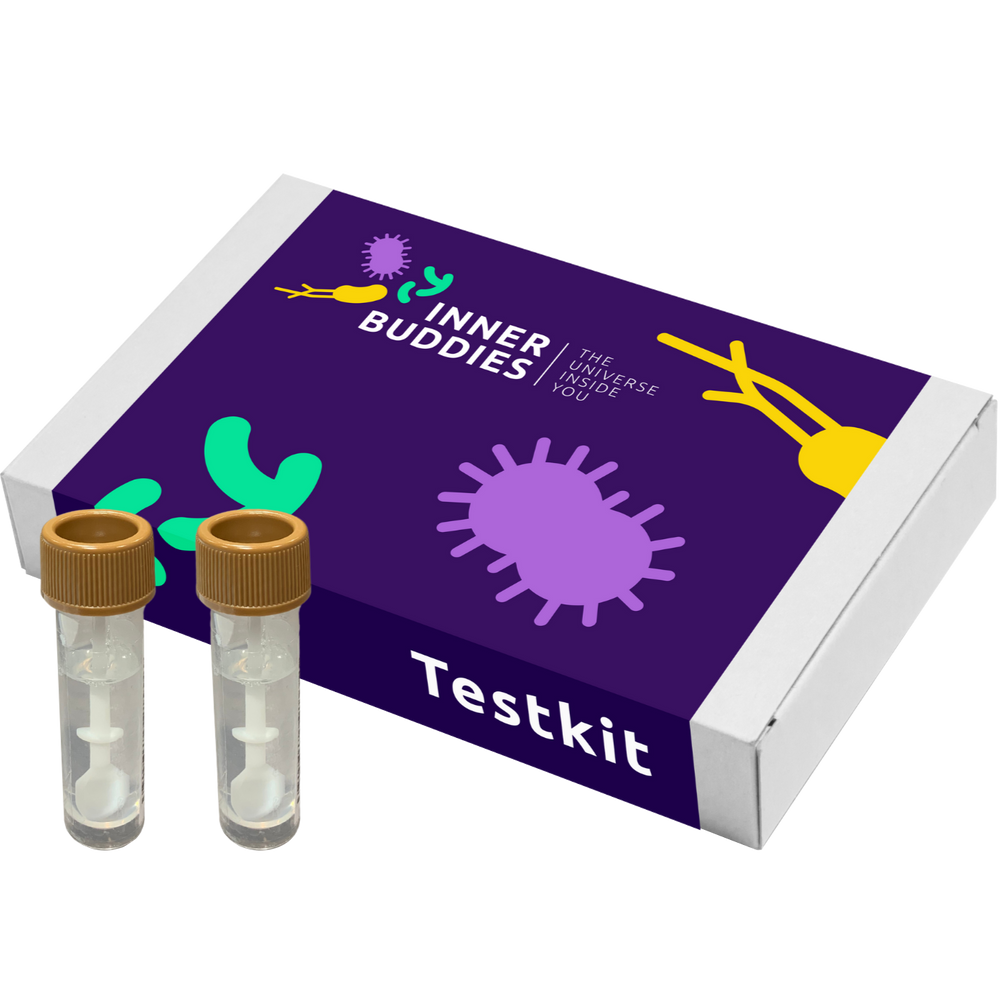
What is Akkermansia muciniphila?
If you never heard about Akkermansia municiphila, no worries! We will introduce it to you and explain why it should be your new buddy. Akkermansia muciniphila was discovered in 2004 by a researcher at Wageningen University in The Netherlands, Murriel Darrien. It was named after the Dutch microbial ecologist Antoon Akkermans from the same university as a tribute to his contribution to microbiology science. The second part of the bacteria name translates from Latin into “love mucus”. Mucus is the protective slime layer on our gut lining. The bacteria received its name because it grows on mucin. In certain disease states, such as obesity, type 2 diabetes, irritable bowel syndrome, and atherosclerosis, Akkermansia is less abundant. Moreover, A. muciniphila is one of the most important species of the intestinal microbiota, comprising about 1 to 5% of the total bacteria.
Our intestine has a single layer of cells lining the interior gut wall that is protected by mucus. This layer is intended to allow "good" substances to enter the body but also prevent harmful substances from entering. The mucus lining is made up of a ‘loose’ outer layer, which houses our bacteria, and a ‘firm’ inner layer which works as a filter, preventing microbes from entering the barrier and causing inflammation. This results in the strengthening of the intestinal barrier. The mucous layer is rich in a protein called mucin. It's not just found in the large intestine but in other places like the lining of the lungs and body fluids like saliva.
Akkermansia loves mucin because it uses it for energy. This is why Muriel chose to add muciniphila to the bacteria's name :) Akkermansia muciniphila acts as a symbiotic bacterium by degrading mucins present in the mucus layer to use as a source of carbon and nitrogen. This constant degradation stimulates the body to produce even more mucin, increasing the thickness of the mucus layer and, consequently, the integrity of the intestinal barrier. In return, Akkermansia fights mucosal inflammation and boosts our metabolism, ensuring that no disease-causing bacteria can take advantage.
Furthermore, when degrading mucins, these are transformed into so-called short-chain fatty acids (SCFAs) - substances that are created when our gut bacteria ferment indigestible food (mainly fibre) and are crucial to gastrointestinal health, one of these short-chain fatty acids being acetate. Acetate is used by other beneficial bacteria like some Firmicutes to make butyrate, a vital energy source for the cells lining your gut.
How can Akkermansia municiphila be beneficial against diseases?
Increased intestinal permeability is associated with a reduction in mucous thickness, and is a feature of obesity. By eating mucins from our intestinal lining and turning them into useful substances (like SCFA), while stimulating the production of more mucus, A. muciniphila thickens our mucous lining and improves the intestinal barrier function. In turn, this helps reduce the amount of food that is absorbed and stored in the body, consequently helping against overweight and obesity. The acetate mentioned above can result in satiety (the feeling of fullness) and, therefore, reduce excess food consumption which could play a key role in avoiding extra weight gain.
Several bacteria are linked with type 2 diabetes. One of the beneficial bacteria against type 2 diabetes is Akkermansia. The reason why is as mentioned above - the anti-inflammatory effects that Akkermansia performs in the body decrease diabetes parameters. Yet, decreasing inflammation is also required to decrease irritable bowel syndrome (IBS) and atherosclerosis (plaque buildup) complaints.
How to increase Akkermansia?
After all the benefits mentioned above, you might be wondering what you can do to increase the abundance of your Akkermansia, right? ;)
Polyphenols should be your nutrient buddy. They look colourful, tasty, fresh, and can increase the abundance of your Akkermansia.
We all know that eating a variety of fruits and vegetables is linked to better health and a lower risk of disease. The reason why is that these foods contain natural substances that our body feeds on, such as polyphenols. Polyphenols have anti-inflammatory properties owing to their superb antioxidant ability, which means that they are involved in preventing many diseases. Examples of sources of polyphenols are coffee, oranges, apples, grapes, olives and olive oil, red wine, cocoa powder, dark chocolate, tea, black elderberry, nuts, whole grains, and legumes.
Fermented products such as sauerkraut, kombucha, kefir, tempeh, and natural yoghurt can also help to increase Akkermansia in your gut. Another point is to increase the intake of unsaturated fat and avoid saturated fat. Diets high in saturated fats are linked to higher incidences of inflammation, type 2 diabetes, and coronary heart disease. While diets high in polyunsaturated fatty acids, such as those found in walnuts, flax seeds, or flax oil, chia seeds, seafood, and fish oils, have been shown to neutralize inflammation and are also associated with leaner individuals. It is so amazing that a bacterium can do all this for us, right? :) Let Akkermansia be your new buddy!
Remember! Even if Akkermansia is a very beneficial bacteria to our gut, like everything in life, we need balance! Too many of these bacteria can also be unhealthy. So, it is important to check the level of this bacteria once in a while and always have a balanced diet.
Reference
-
Hills Jr, R. D., Pontefract, B. A., Mishcon, H. R., Black, C. A., Sutton, S. C., & Theberge, C. R. (2022). Gut microbiome: profound implications for diet and disease. Kompass Nutrition & Dietetics, 1-16, 1–16. https://doi.org/10.1159/000523712
-
Zhai, Q., Feng, S., Arjan, N., & Chen, W. (2019). A next generation probiotic, akkermansia muciniphila. Critical Reviews in Food Science and Nutrition, 59(19), 3227–3236. https://doi.org/10.1080/10408398.2018.1517725
-
Hasani, A., Ebrahimzadeh, S., Hemmati, F., Khabbaz, A., Hasani, A., & Gholizadeh, P. (2021). The role of akkermansia muciniphila in obesity, diabetes and atherosclerosis. Journal of Medical Microbiology, 70(10). https://doi.org/10.1099/jmm.0.001435




0 comments